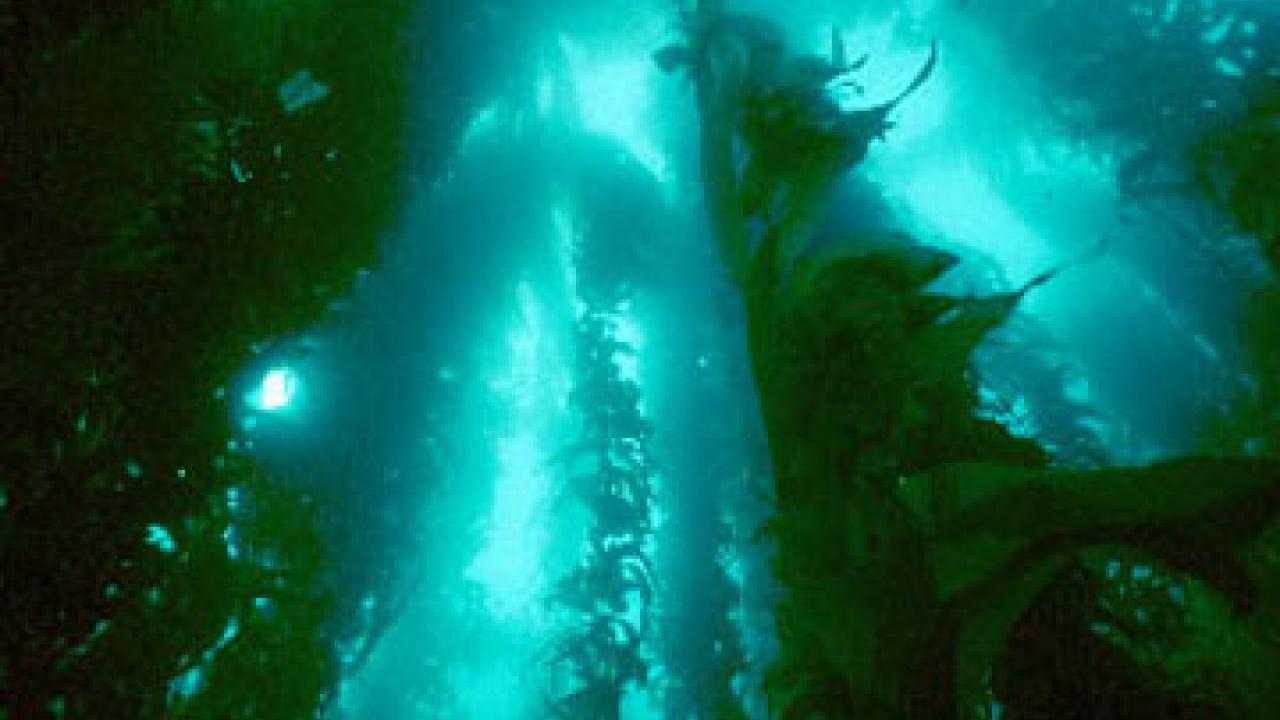The kelp forests off southern California are considered to be some of the most diverse and productive ecosystems on the planet, yet a recent study indicates that today’s kelp beds are less extensive and lush than those in the recent past.
The kelp forest tripled in size from the peak of glaciation 20,000 years ago to about 7,500 years ago, then shrank by up to 70 percent to present day levels, according to the study by Rick Grosberg, professor in the Department of Evolution and Ecology and the Center for Population Biology at UC Davis, with Michael Graham of the Moss Landing Marine Laboratory and Brian Kinlan at UC Santa Barbara. They published their work in the Proceedings of the Royal Society B.
Kelp forests around offshore islands peaked around 13,500 years ago as rising sea levels created new habitat and then declined to present-day levels. The kelp along the mainland coast peaked around 5,000 years later.
Archaeological record
This transition from an extensive, island-based kelp system to a mainland-dominated system coincided with conspicuous events in the archaeological record of the maritime people in the region, suggesting that climate-driven shifts in kelp ecosystems impacted human populations that used those resources.
Understanding the past history of a population is crucial to understanding its genetics in the present, Grosberg said.
“Kelp is interesting because it disperses only over short distances,” Grosberg said. “Populations can become genetically isolated from one another even if they are quite close together.”
“We wanted to know how connected the coastal kelp populations were since the last glacial maximum,” he said.
Kelp leaves no clues
On land, scientists can reconstruct the history of a forest or grassland from fossilized pollen or leaves. But kelp do not make pollen, and marine sediments do not preserve a good record of the plants.
The researchers used depth charts of the southern California coastline and information from sediment cores on past nutrient availability to reconstruct potential kelp habitat as sea levels changed over the last 20,000 years.
“We could reconstruct changes in kelp cover at a scale of 500 years and determine how fragmented or connected the populations were,” Grosberg said.
In times of dwindling resources on land, people have lived off the produce of kelp forests — as documented by shell middens and other traces. That archaeological record can now be compared with the ecological history to get a more complete picture of California’s coast.
“Now we know what was happening with kelp, what was happening with the ecology on land, and what the people were doing,” Grosberg said.
Media Resources
Dave Jones, Dateline, 530-752-6556, dljones@ucdavis.edu
